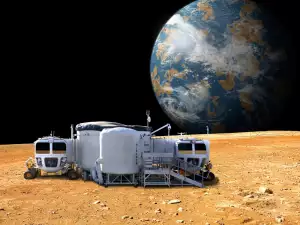Experts from NASA's research department have announced that in the future, people may be able to colonize the surface of Mars by inhabiting igloos. Of course, their frozen homes won't be the same as the traditional Eskimo ones, instead they will be built utilizing a unique new design, intended to be able to handle the harsh conditions on the Red Planet.
The ice that's to be used by the future colonists is going to be extracted from the massive deposits of frozen water found beneath the surface of the planet. Besides saving trillions of dollars in hauling building materials from Earth, the ice will also protect humans from the solar radiation that's bombarding the planet.
Experts posit that once Mars becomes inhabited, humans in its ice cities will easily be able to take advantage of the planet's natural resources, without having any need of additional supplies sent from Earth.
This theory became ever more plausible after the Mars rover, sent to study the surface of Earth's neighboring planet, found a deep and massive aquifer, in November of last year. Initial data showed that there's more water hidden beneath the surface than in the Great Lakes.
Radiation is a huge problem for future space missions but ice successfully shields against it. And that is exactly why scientists intend to use this material in constructing future Martian homes.
These homes are going to have a metal inner structure and shell, with ice serving as the outermost protective layer. It is to act as a radiation shield. There's going to be a space of 1.5 ft (0.5 m) between the inner metal layer and outermost ice layer, with the aim being to prevent heat loss as much as possible.

The houses will actually utilize the well-known igloo shaped design due to its ability to keep heat in. Each igloo is planned to have several zones. One will be the sleep zone for colonists, with another for rest, food preparation and even an orchard. They are designed to house a crew of 4.
Naturally, Martian igloos will be significantly larger than Earth ones. Initial calculations estimate an average radius of more than 164 ft (50 m). Scientists continue to work arduously on realizing a mission whose objective is the colonization of the surface of Mars. The year 2037 is the projected realistic date it may indeed start.








